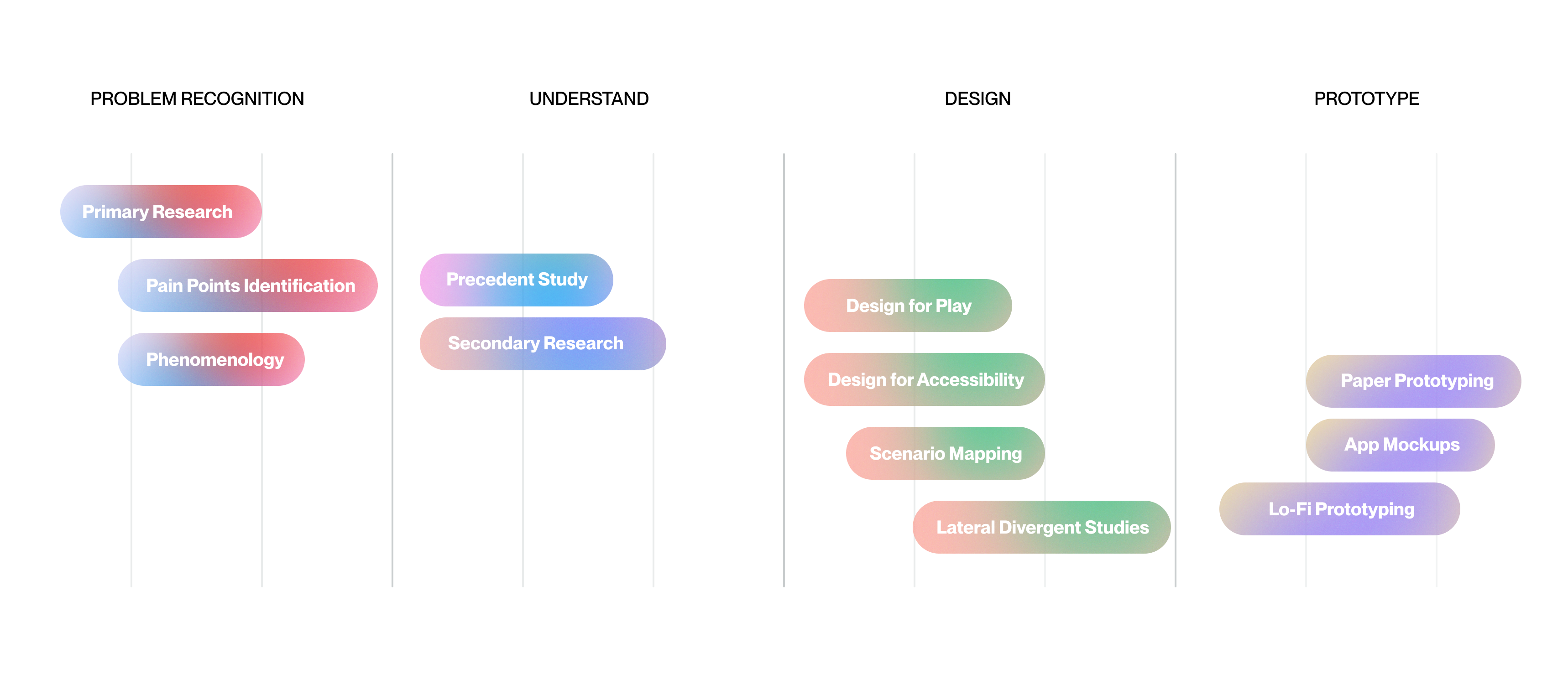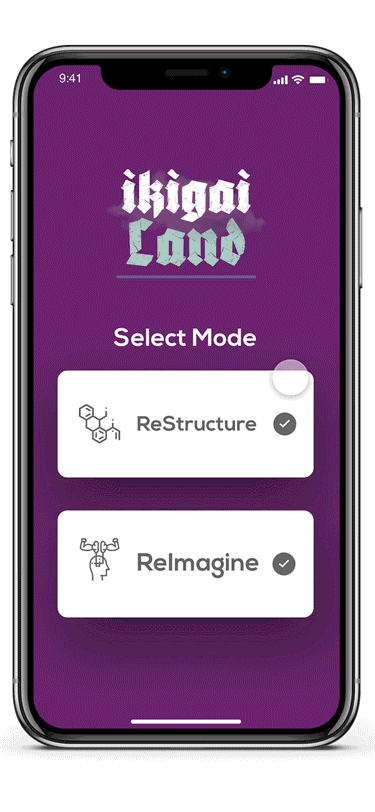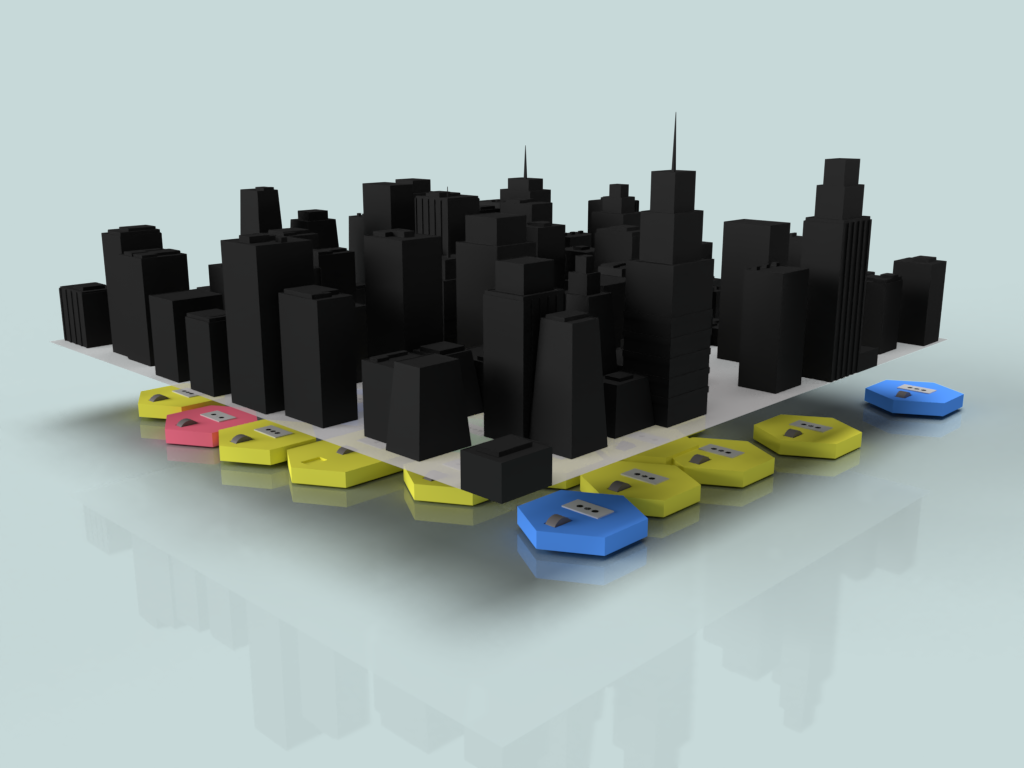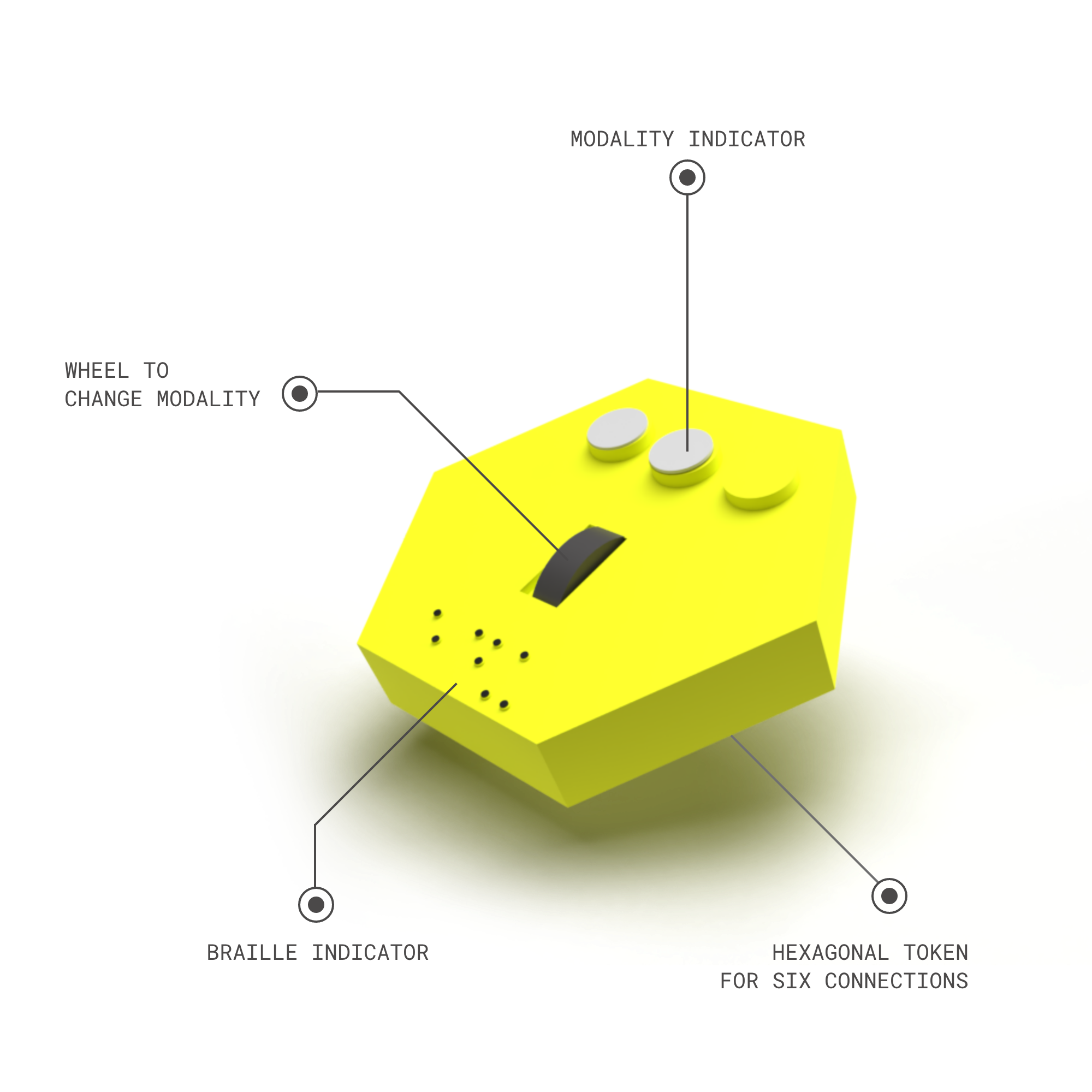Ikigailand
Gamified Urban Planning Experiences For Improved Participatory Planning
Role: Lead Author, Programming & Prototyping
Duration: 5 weeks
Accolades: Final selection, Student Design Competition
Duration: 5 weeks
Accolades: Final selection, Student Design Competition
Brief
We sense a palpable lack of thoughtful consideration and innovation in the spaces we inhabit. Too often, there is an immense disconnect between the aspirations of inhabitants and the realities of these spaces (cities, towns etc.). These spaces effect every aspect of human existence from healthcare, education to overall well-being of inhabitants. In this project, we introduce a novel gamified experience called IkigaiLand, that allows users to reconstruct existent localities to better reflect their expectations and aspirations while equipping them with tangible information about planning and infrastructure in their own surroundings. It also allows relevant authorities to better understand the collective needs of citizens/residents of the area and prospectively utilize their generated solutions. Special consider- ation has been made to make the solution accessible, inclusive and democratized to incorporate diversity in opinion and participation. The game employs the use of tokenised entities such as buildings and an Augmented Reality(AR) application all encapsulated within gamified interactions to allow users to visualise and quantify the resilience and effectiveness of their constructed cities. We envisage this gamified experience as a tool for collective dreaming that al- lows communities to better articulate and facilitate innovation in the space of urban planning.
Provocation
As students living in the city of Gandhinagar, a city often laureled for its meticulous planning, accessing affordable healthcare facilities was particularly difficult given its distance from campus. This conundrum was exacerbated with the arrival of monsoons, and with it, the influx of Dengue cases in our institute. The inspection and critique of current urban planning paradigms led us to the development of an alternative research tool.
However, as the world was plummeted into a global pandemic, the disparity in access to resources and services became exceedingly evident. Whether it was the megacity of Mumbai or a relatively remote village in Kerala, each locality had its own lieu of issues and deficiencies. This realization elucidated that it wasn’t a lack in research modalities, but a lack of opinions that was absent in contemporary planning methods. Precedents show real merit in participatory planning, and yet there seem no viable or lucid imple- mentations in status quo that democratizes urban planning. With this identification, we set out to develop IkigaiLand.

Research Objectives
︎︎︎ To identify people’s perception and understand their expectations / aspirations for their localities.︎︎︎ To understand resident’s gripes and concerns from the spaces they inhabit.
︎︎︎ To ascertain participants’ knowledge on the subject matter of infrastructure and urban planning.
Research Methodologies
The research employed four key methods:Semi Structured Interview
Personal accounts of experience, opinions and perceptions about relationship between the cities and participants were collected. The fundamental aim of this method was to get an insight into the personal aspirations and apprehen- sions of the participants in matters pertaining to their localities, and what their prospective solutions might be.
Personal accounts of experience, opinions and perceptions about relationship between the cities and participants were collected. The fundamental aim of this method was to get an insight into the personal aspirations and apprehen- sions of the participants in matters pertaining to their localities, and what their prospective solutions might be.
Questionnaire
Participants were asked to partake in a 15 point questionnaire that tested their current understanding and knowledge of urban planning and existing infrastructure in their city/town/district of residence.
Participants were asked to partake in a 15 point questionnaire that tested their current understanding and knowledge of urban planning and existing infrastructure in their city/town/district of residence.
Love Letters to Cities
Participants were encouraged to write love letters to their cities. This is an alternative method for qualitative research that seeks to capture notions and perceptions participants may have of their cities in a personal narrative format. We intended to explore various associations, emotions and concerns that people connected with their inhabited localities.
Participants were encouraged to write love letters to their cities. This is an alternative method for qualitative research that seeks to capture notions and perceptions participants may have of their cities in a personal narrative format. We intended to explore various associations, emotions and concerns that people connected with their inhabited localities.
Associative Experiment
This method was used to identify how people associate different moods, emotions and states-of-mind with different locations in their cities. Participants were asked to elucidate a specific location in their cities that they would visit, based on different generative scenarios. These locations were later cross- referenced in distance with the participants’ current residence.
This method was used to identify how people associate different moods, emotions and states-of-mind with different locations in their cities. Participants were asked to elucidate a specific location in their cities that they would visit, based on different generative scenarios. These locations were later cross- referenced in distance with the participants’ current residence.
Gameplay


Solution
IkigaiLand is a gamified urban planning experience designed for two (or more) players. The aim of the gamified experience is to construct a resilient locality while potentially exploiting flaws in the opponents’ designed locality and diminishing the opponent localities resilience. The user journey begins with the IkigaiLand app where the users must select one of two modes: ① Re-Structure Mode and ② Re-Imagine Mode.Re-Structure mode expects users to create a new layout with existing structures/entities within said locality. Re-Imagine mode allows users conceptualize completely novel layouts for a locality with buildings/entities of user’s choice by choosing the appropriate token categories and modalities.
TUIs (Tangible User Interfaces) allow users to access two different worlds (Virtual and Physical) simultaneously while also leveraging the tactility and dexterity of users. A tangible experience consisting of tokens was conceptualised so users could better understand the nuances of planning and while also leveraging tangible feedback from the decisions participants took within this gamified experience. Furthermore, game pieces (tokens and grid) have been made as affordable as possible using simple mechanical parts to ensure lucid creation and increased access to larger demographics.
Prototype







GRID AUGMENTATION



TOKEN
![]()

POSTER
![]()

